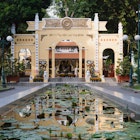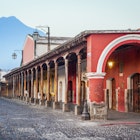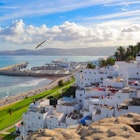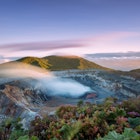
Nov 16, 2025 • 8 min read
In Japan, trains allow for a wide spectrum of experiences – from slow travel through rural towns to bullet trains between cities.

Nov 16, 2025 • 8 min read
In Japan, trains allow for a wide spectrum of experiences – from slow travel through rural towns to bullet trains between cities.

Nov 15, 2025 • 7 min read
A homestay in Nepal is more than a place to crash for a night. You are truly a guest, one who participates in daily activities and gets home-cooked meals.

Nov 15, 2025 • 9 min read
Fine food and French architecture set the mood in Ho Chi Minh City, Vietnam's southern metropolis. Here are the 10 best things to do in the former Saigon.

Nov 15, 2025 • 8 min read
From the karst islands of Halong Bay to the dunes of Mui Ne, Vietnam serves up stunning landscapes in every direction. Here are the best natural wonders.

Nov 15, 2025 • 8 min read
Ho Chi Minh City is one of Southeast Asia’s top destinations for budget-friendly enjoyment. Here's how to spend your time while saving your money.

Nov 14, 2025 • 9 min read
Learn the unspoken rules of daily life in Jamaica – plus practical tips for planning, transportation and safety – before visiting this Caribbean island.

Nov 14, 2025 • 6 min read
Go outside and play or stay active indoors with these top activities in the Massachusetts capital.

Nov 14, 2025 • 2 min read
The majestic minarets and vibrant souks, ancient pearl-diving and glimpses of a historic trading hub – these spaces are packed with the flavors of Old Dubai.

Nov 14, 2025 • 12 min read
Antigua continually melts visitors’ hearts, which has made it one of Guatemala’s most-visited spots.

Nov 14, 2025 • 4 min read
With thousands of miles of coastline, Morocco – a country known for sand dunes and the Sahara – has a slew of lovely beaches to enjoy.

Nov 14, 2025 • 8 min read
You may wonder what makes this slice of the desert so special, but it really is a relaxing, design-forward haven, baking under California’s signature sun.

Nov 14, 2025 • 5 min read
Jawai in Rajasthan has a landscape like no other in India. Plan your visit with this guide.

Nov 14, 2025 • 10 min read
Warm your body and soothe your soul this winter in Boston at these top places to eat and drink.

Nov 14, 2025 • 7 min read
Stay in a home away from home at India's best family-run boutique hotels.

Nov 14, 2025 • 7 min read
These cultural gems take even the most severe Boston winter from cold to cozy.

Nov 14, 2025 • 13 min read
El Salvador is a small land with a big story to tell. Here are the best things to do, from surfing the Pacific Coast to climbing the country's volcanoes.

Nov 14, 2025 • 11 min read
Come to Costa Rica for its multitude of outdoor activities, from surfing and hiking to watching wildlife in a rainforest or zip-lining in a cloud forest.

Nov 14, 2025 • 11 min read
Oaxaca’s food is deeply rooted in tradition and place. Take your tastebuds on a tour of diverse moles, tasty tlayudas, crunchy chapulines and more.

Nov 14, 2025 • 10 min read
Four weeklong itineraries cover Sri Lanka's ancient cities, palm-fringed beaches and lush and misty hill country.

Nov 14, 2025 • 8 min read
From world-famous beaches and generous green spaces to cultural centers and museums, there's plenty to do in Rio without spending a single centavo.

Nov 14, 2025 • 9 min read
Rome is a sensory overload in the best way but that can also make it overwhelming for first-time visitors. Here's what you need to know before you go.

Nov 14, 2025 • 10 min read
A trip to Rome is as much about lapping up the dolce vita as gorging on art and culture. Here's a look at the city's top neighborhoods.